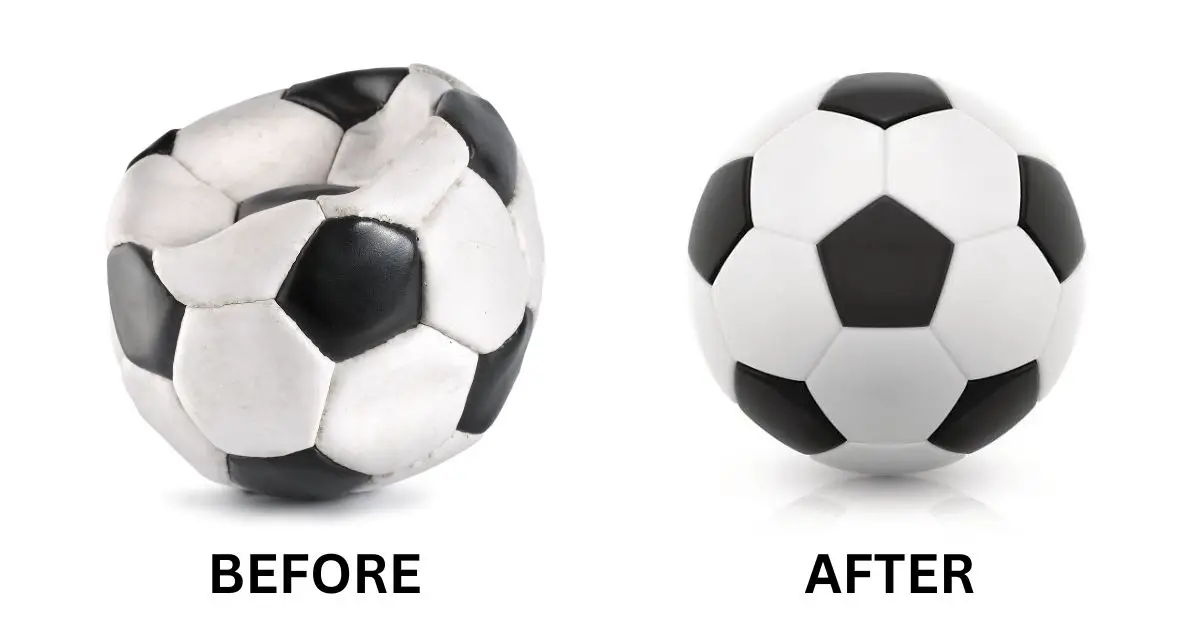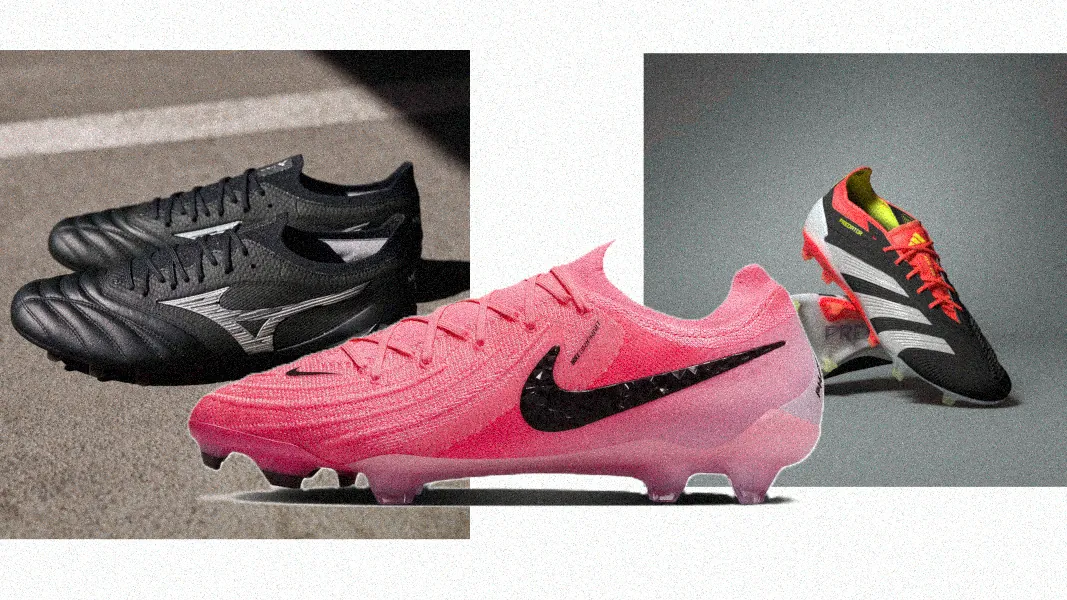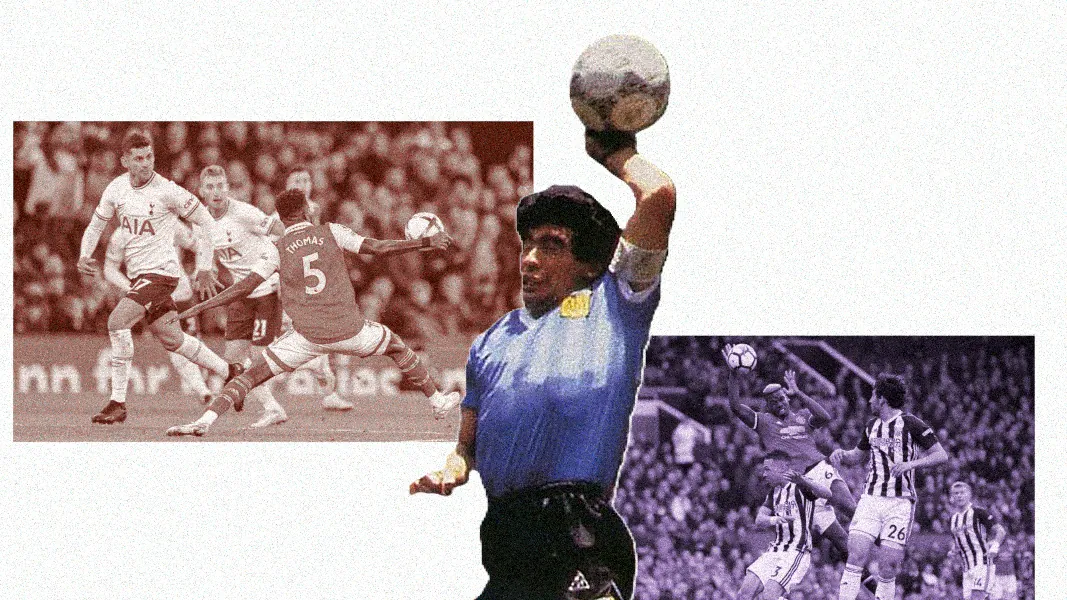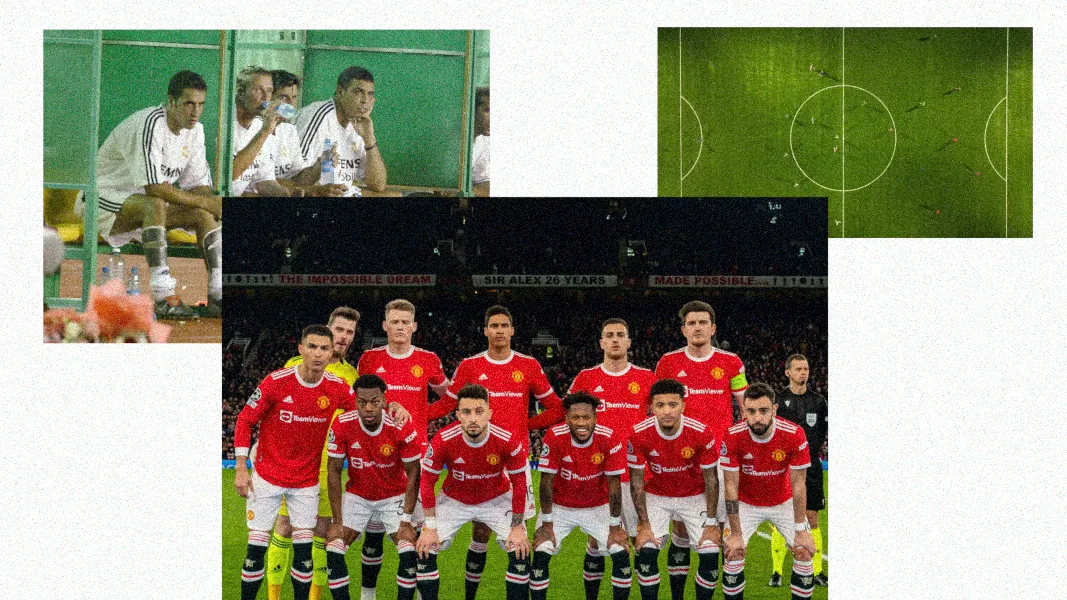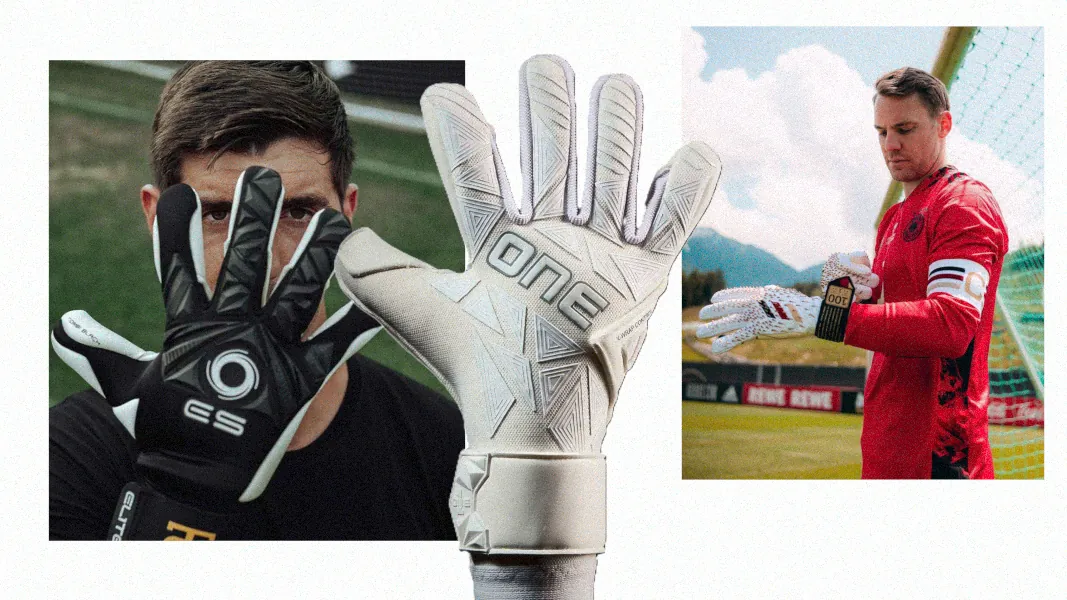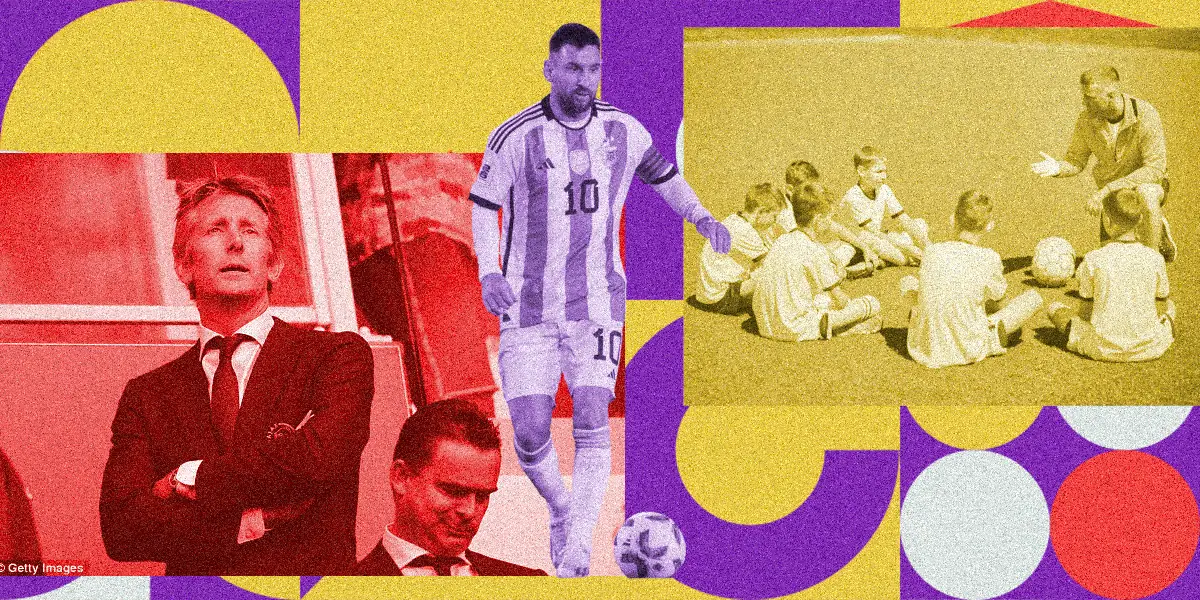If you are playing professional soccer at any level or pick up soccer with your friends. We all have all come across this question, “How to fix a soccer ball“
In this article, we are discussing the process and materials needed to fix your soccer ball against some basic issues.
Understanding Soccer Ball Construction
Anatomy of a Soccer Ball
The anatomy of a basic soccer ball can be divided into three parts:
| Component | Description |
|---|---|
| Outer Covering | The inflatable component inside the ball, holds the air that gives it shape and bounce. Can be latex or butyl, with each offering distinct properties. |
| Internal Bladder | The panels that make up the ball’s spherical shape and the stitching that joins them together. The stitching ensures structural integrity and shape retention. |
| Stitching and Panels | The inflatable component inside the ball holds the air that gives it shape and bounce. Can be latex or butyl, with each offering distinct properties. |
Types of Soccer Balls
There are different types of balls used in soccer, lets give you a brief understanding of what ball you may be working with:
| Type | Description |
|---|---|
| Training Balls | Designed for durability and frequent use during practice sessions. Features reinforced materials for extended lifespan. |
| Match Balls | Optimized for performance during official matches, offering consistent flight, accurate control, and proper bounce. |
| Futsal Balls | Specifically designed for indoor soccer, with reduced bounce and smaller size to suit fast-paced futsal gameplay. |
| Specialty Balls | Cater to specific needs such as beach soccer, street soccer, or promotional purposes, featuring unique design elements. |
Identifying Common Soccer Ball Problems
There are several issues that come with soccer balls, let’s discuss some of the common issues and how to recognize them in your ball.
| Problem | Description | Recognition |
|---|---|---|
| Deflation and Air Leakage | Deflation affects bounce and playability. Air leakage causes hissing sounds when pressing the ball. | Observe reduced bounce; listen for hissing sounds during compression. |
| Worn Out Covering | Outer covering cracks, peels, and tears due to exposure. | Visually inspect for cracks, peeling patches, or torn areas on the outer surface. |
| Uneven Shape and Bouncing | Loss of shape leads to erratic bouncing and ball movement. | Roll the ball on a flat surface to observe deviations from a straight path and wobbling. |
| Waterlogging and Moisture | Excessive moisture leads to waterlogging, increasing weight. | Feel for increased weight and check for signs of moisture retention, such as a soggy covering. |
| Loss of Stitching and Panels | Loose stitching results in panel separation and structural compromise. | Inspect seams and stitching lines for loose threads, open seams, or visible gaps between panels. |
Tools and Materials for Soccer Ball Repair
There are several tools and materials you may need to repair your soccer ball. Let’s discuss these tools and whether you should seek professional help:
Essential Repair Kit Components
| Repair Kit Component | Description |
|---|---|
| Pump with Needle | Essential for inflating the ball to the correct pressure, ensuring optimal performance. |
| Adhesive and Patch Material | Crucial for repairing punctures and tears on the outer covering, providing a waterproof seal. |
| Scissors | Necessary for cutting patch materials to the required size and shape. |
| Stitching Tools | Includes needles and strong thread for rejoining panels and securing patches. |
DIY vs. Professional Repair
When to Attempt DIY Fixes
If you’re comfortable with basic repairs and have experience working with adhesive and stitching, you can tackle minor issues like small punctures and tears. These can often be successfully repaired with a DIY approach.
Seeking Professional Assistance
For more complex issues, such as extensive bladder damage or major structural problems, seeking professional assistance from experienced soccer ball repair specialists is recommended. They have the expertise and tools to handle intricate repairs effectively.
Step-by-Step Repair Instructions
With the foundational elements in place, it’s time to delve into the core of the matter and present you with a comprehensive step-by-step process of some of these issues with your soccer balls:
Patching Small Holes and Tears
Step 1: Clean the Area
Clean the damaged area on the ball’s outer covering using a damp cloth to remove dirt, debris, and any adhesive residues.
Step 2: Apply Adhesive Patch
Cut a patch from your adhesive material slightly larger than the damaged area. Apply a thin layer of adhesive to the back of the patch and press it firmly onto the damaged spot.
Step 3: Proper Drying and Inspection
Allow the adhesive to dry as per the manufacturer’s instructions. Once dry, inspect the patch for secure adhesion and smooth edges.
Replacing or Repairing the Bladder
Step 1: Deflate the Ball Safely
Use the release valve to deflate the ball fully and remove any existing air pressure.
Step 2: Removing and Replacing Bladder
If replacing the bladder, carefully open the ball’s stitching using stitching tools. Gently remove the old bladder and insert the new one. Re-stitch the ball’s panels securely.
Step 3: Securing and Reinflating
Ensure that the stitching is tight and secure. Use the pump with the appropriate needle to inflate the ball to the recommended pressure.
Restoring Proper Shape and Balance
Step 1: Measuring and Adjusting Pressure
Use a pressure gauge to measure the ball’s pressure. Adjust the pressure to the manufacturer’s recommended levels.
Step 2: Rotating Ball During Inflation
Inflate the ball while rotating it to ensure even pressure distribution. Pay attention to the ball’s symmetry as you inflate it.
Step 3: Bounce and Shape Testing
Bounce the ball on a flat surface and observe its bounce. Roll the ball to check for any wobbling or deviations from a straight path.
Preventive Maintenance and Care
Just like any other piece of sports equipment, a soccer ball requires regular care to maintain its performance and longevity.
Preventive maintenance practices can help you avoid common issues and ensure that your ball remains in optimal playing condition.
Regular Inspection Routine
| Inspection Step | Description |
|---|---|
| Check for Leaks and Damage | Regularly examine the ball for air leakage, reduced bounce, and visible damage to the outer cover. |
| Clean and Wipe Down | After use, clean the ball with a damp cloth to remove dirt, mud, and debris for outer covering care. |
| Monitor Stitching and Panels | Inspect stitching lines and panel seams for loosening or damage to ensure panels remain securely joined. |
Proper Inflation Guidelines
| Inflation Step | Description |
|---|---|
| Follow the Manufacturer’s Recommendations | Adhere to the manufacturer’s inflation pressure guidelines to prevent stress on the bladder and seams. |
| Monitor Pressure Over Time | Check ball pressure before use and adjust to recommended levels to maintain optimal playability. |
| Store Inflated Balls Properly | Store the ball slightly deflated in a cool, dry place away from direct sunlight for proper storage. |
Addressing Moisture Exposure
| Moisture Step | Description |
|---|---|
| Wipe Down After Wet Conditions | After wet play, wipe down the ball with a dry cloth to prevent water damage and waterlogging. |
| Proper Drying | If waterlogged, ensure complete drying in a shaded area to prevent damage and maintain shape. |
Storage Tips
| Storage Step | Description |
|---|---|
| Use Proper Storage Containers | Store balls in containers that protect from dust and impacts to prolong their life and quality. |
| Rotate Ball Storage | Rotate ball usage to distribute wear evenly if you have multiple balls, avoiding overuse. |
